Authors
Wendy Stark, WindsorEssex Economic Development Corporation, wstark@choosewindsoressex.com
Kevin Berk, Faculty of Law and Great Lakes Institute of Environmental Research, University of Windsor, berkk@uwindsor.ca
Background
The Windsor Census Metropolitan Area (CMA; as identified by Statistics Canada to include Windsor, LaSalle, Amherstburg, Tecumseh, Lakeshore, and Lakeshore; Figure 1) has experienced significant population growth in recent years. This trend is in line with many other urban areas in Ontario. According to Statistics Canada, the key contributor to this growth is the higher targets for permanent and temporary immigration set by the Canadian government (Statistics Canada, 2019a).
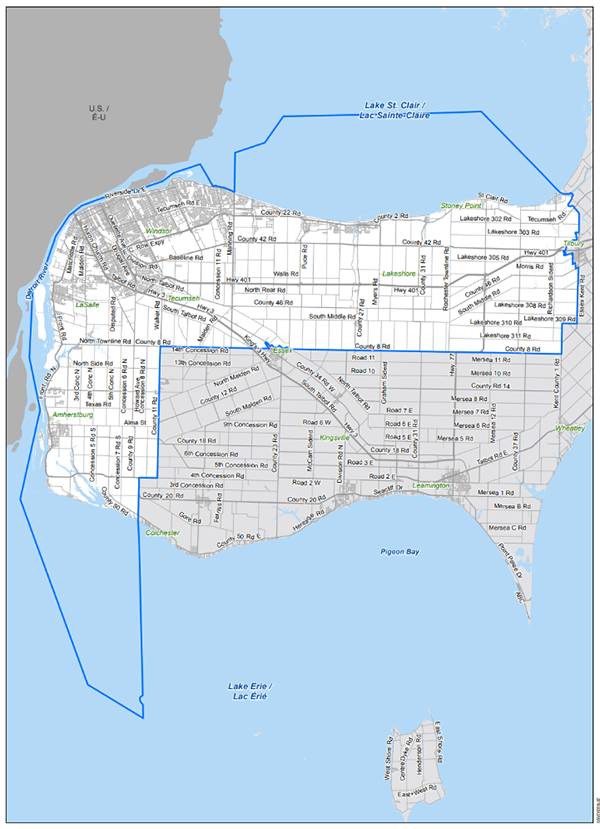
Figure 1. This trend is of great importance to the environmental status of the region as increases in human population can have profound impacts on ecosystems. Urbanization is the most impactful and irreversible form of anthropocentric land use. The widespread impacts of urbanization include changes in land cover, hydrological systems, climate, biogeochemistry, and biodiversity. Urban expansion is a primary driver of habitat loss, loss of prime agricultural land, and encroachment on protected areas. The development of urban centres furthermore impacts travel demand and energy consumption (Seto et al., 2011).
As a result of this widespread impact, it is essential to understand how urban populations are developing and to ensure that the development is conducted in environmentally responsible ways.
Status and Trends
The Windsor CMA experienced the third-highest (tied with Ottawa-Gatineau) population growth in all of Canada from 2017 to 2018 (Figure 2). Windsor’s CMA population growth of +2.5% over the year was above the Canadian average of +1.8% growth in large urban areas. Furthermore, the growth exhibited in Windsor was part of a greater trend across Canada as growth in large urban centres greatly outpaced growth in the rest of the country (+1.8% vs +0.6%). This trend also reflects greater growth occurring across Ontario as the five greatest centres for growth (Peterborough, Kitchener-Cambridge-Waterloo, Ottawa, Windsor, and London) are all Ontario CMAs (Statistics Canada, 2019b).
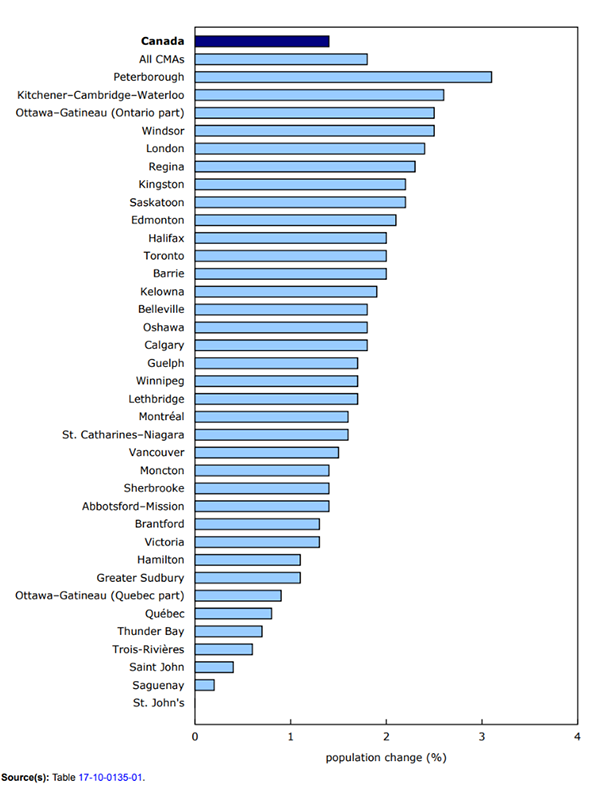
Figure 2. Population change percentage in each Canadian CMA from 2017 to 2018 (Source: Statistics Canada).
Historical population growth trends in the Windsor CMA show nearly two decades of population growth starting in 1987, followed by a decline or stagnation between 2006 and 2016, and then a substantial increase in population between 2016 and 2018 (Figure 3). This trend is consistent with Statistics Canada’s hypothesis that the new growth in large urban areas is primarily driven by Canada’s new immigration policies that have led to changes in the immigration system.
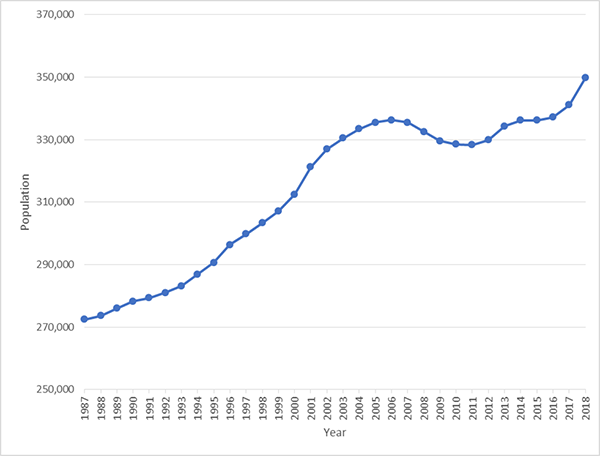
Figure 3. Windsor CMA historical population trend, 1987-2018 (Source – Statistics Canada).
Population forecasts conducted by the WindsorEssex Economic Development Corporation (Figure 4) project that the recent increase in population growth will continue through 2019 at a rate greater than the historical average, although not quite the rate of 2018, and further growth at lower rates through 2020-2023.
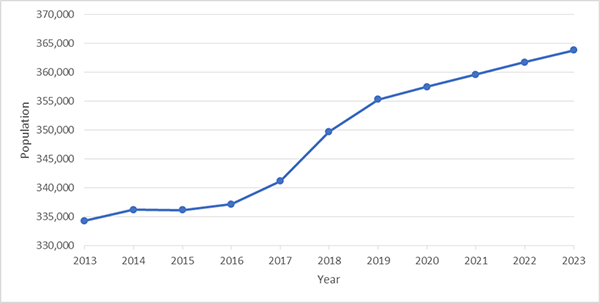
Figure 4. Windsor CMA’s forecasted population trend (source: Conference Board of Canada).
Population projections released by the City of Windsor in 2018 (Figure 5; does not include the rest of the Windsor CMA) provide a similar short-term forecast with continued growth through 2026, but population stagnation to occur from 2026-2036 (City of Windsor, 2018).
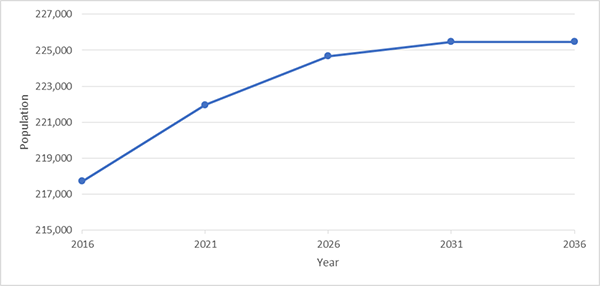
Figure 5. City of Windsor’s forecasted population trend (Source: City of Windsor).
Management Next Steps
With the current and projected increases in population in the Windsor CMA much work will need to be done to ensure that the pressure from further urbanization on the ecosystem is adequately managed and controlled. This work will include environmentally conscious expansion which prevents habitat loss, loss of prime agricultural land, and encroachment on protected areas.Although urbanization poses threats to the environment in terms of land use, it can result in improved climate mitigation at the same time. This mitigation occurs when residential and employment spaces become more dense resulting in reduced energy consumption, less vehicle travel, and thus reduced carbon dioxide emissions. This is further reinforced by per capita emissions being lower in urban areas than national averages (Seto et. al, 2011).
The threats to the ecosystem and the potential mitigation benefits outlined above will require a coordinated effort to be managed and controlled. Environmentally responsible population growth requires climate mitigation and adaptation plans, coordination between businesses and governments, and strong land use laws. Multiple groups such as the city of Windsor, the governments of surrounding municipalities, provincial and federal governments, as well as the Essex Region Conservation Authority will be required to work together to ensure that the pressure on the ecosystem is being adequately controlled and addressed.
Research/Monitoring Needs
Due to the multifaceted impacts of population pressure on the ecosystem, and the corresponding requirement for a varied response to these pressures, individuals doing environmental work in the region will need to monitor the steps being taken to address the pressure. Specific attention will need to be paid to the ensuring that collaborative efforts are being made by various groups (including municipal governments, businesses, and conservative authorities) to adequately manage the pressure on the ecosystem, and potentially take advantage of prospective climate mitigation benefits of urbanization. Long-term monitoring is needed to measure ecosystem impacts of human population growth and expansion, and to adequately inform management consistent with adaptive management that assesses, sets priorities, and takes action in an iterative fashion for continuous improvement.
References
- City of Windsor. 2018. Windsor Population Projections and Demand for Dwellings: 2016-2036. Windsor, Ontario, Canada.
- Conference Board of Canada. 2019. Metropolitan Data. Ottawa, Ontario, Canada.
- Seto K.C., M. Fragkias, B. Güneralp, and M.K. Reilly. 2011. A Meta-Analysis of Global Urban Land Expansion. PLoS ONE 6(8): e23777.
- Statistics Canada. 2019a. Canada’s Population Estimates: Subprovincial Areas, July 1, 2018. Ottawa, Ontario, Canada.
- Statistics Canada. 2019b. Focus on Geography Series, 2016 Census. Ottawa, Ontario, Canada.
